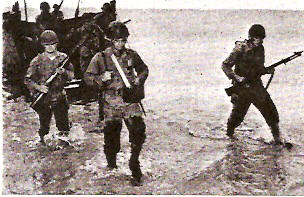
World War II - 1940's
There were two key factors leading up to World War II that required the development of ruggedized portable radiation instruments. The first was the concern that the Germans would lace the beaches of Normandy with radioactive materials to deter U.S. and Allied landing teams and was code named Operation Peppermint. There was also concerned of a preemptive attack by Germany using radioactive material as a weapon on U.S. cities. The second was intelligence that Germans would mark their anti-tank mines with radioactive materials so they could easily identify where they were buried and was code named Project Mamie.
In 1942, the U.S. was concerned that the Germans were making progress on either an atomic bomb or production of radioactive materials. The U.S. initiated a program of high priority in late 1942 to develop portable radiation instruments for field use. The two primary contributors were the Metallurgical Lab (Met Lab) in Chicago and the Victoreen Instrument Company. By 1943, several instruments were developed for field use and evaluation. Victoreen provided 48 instruments. The instrument ranges were 0-10 R/day (24 units) and 0-200 R/h (24 units). The units were positioned at several locations (Manhattan District offices in Boston, Chicago, New York, San Francisco and Washington, D.C.)around the U.S. with instructions for use. The remaining instruments were left at the Met Lab in Chicago for use by scientists in the event of a radioactive attack. The scientists would proceed to the scene of the radioactive attack and assist in locating and measuring any activity present and interpret the data. The programs primary concern, however, was the use of radioactive material as a weapon in an attack by the Germans on a U.S. city. One indication of a large scale attack would be the blackening of x-ray films. Operation Peppermint was the U.S. military response to the potential of radioactive materials being used against US forces invading Europe at Normandy beaches. The thought was that the beaches would be laced with radioactive materials to deter or slow the beach invasion. Fortunately radioactive materials were not used during the invasion.
The U.S. decided to brief the British of the possible use of radioactive materials by the Germans and instructed on how to identify it. They were also given a few radiation detection instruments. European Commands were instructed to report any fogging of x-ray film. The small team trained with the instruments would respond and investigate any unusual fogging incidents.
General Groves decided to info the General Eisenhower, Commanding General, Supreme Headquarters Allied Expeditionary Force of the possible use of radioactive materials by the Germans during the invasion. Major Peterson was dispatched to the United Kingdom to brief General Eisenhower. He was briefing in Apr 1944. In order to prepare U.S. troops, a plan code named Peppermint was developed. Three aspects were included:
1. Centralization of all detection equipment.
2. Establishment of a method for the initial detection.
3. Effective channels for reporting to Headquarters.
Participating Commands were instructed to report unusual film fogging, certain clinical symptoms and medical cases. The British soon followed suit. The British agreed to employ the Cavendish Laboratories at Cambridge University to assist in identifying the type of radioactive material.
The equipment deployed to Britain included 1500 film packets, 11 survey meters, and 1 Geiger counter. Additional equipment consisting of 1500 film packets, 25 survey meters and 5 Geiger counter were kept in reserve in the U.S. Commercial companies were also completing the development of an additional 200 survey meters and 25 Geiger counters.
Dry runs were conducted prior to the Normandy invasion to test the equipment and provide field experience for the deploying personnel. Bombed areas along the coast of England were surveyed for radioactive materials but none found.

Beach survey training with ionization chambers in preparation for WW II Operation Peppermint early 1940's
However, in order to ready the U.S. military to detect radiation, they turned to the Victoreen Corporation which was producing a commercial unit known as the Model 247. The portable Model 247 ionization chamber was the basis for developing a rugged design for the military. The Model 247 was a gamma survey meter with a 56 cubic inch air ionization chamber commercially available in 1945, but dates back to mid-1943. The original Model 247 was rectangular box shape 12” long x 9” wide x 10” high and weighed 14 lbs.
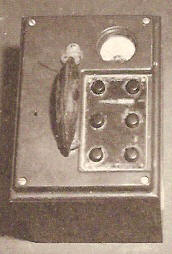
Victoreen Model 247 1945
Buidling upon the Model 247, the U.S. military requested that Victoreen develop a ruggedize, waterproof version which became the Model 247A and 247A Special. These units were the military versions of the Model 247 and each had four decade ranges from 2.5-2,500 mR/h and 25-25,000 mR/h, respectively, for x-ray and gamma radiation. The case is watertight and hermetically sealed. The wall of the chamber is typically made of a material that has the same absorption characteristics as air, namely carbon. A unique eccentric range switch is color coded to give visual indications of the range that the meter is set. The unit came in a baked grey enamel finish.
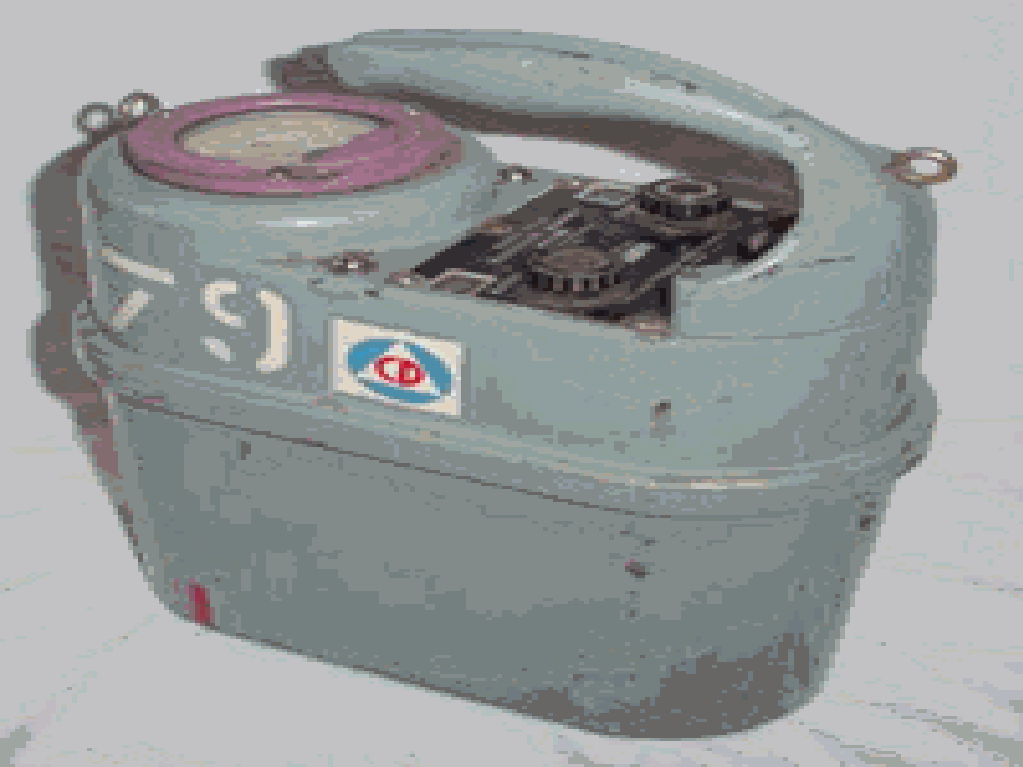
Victoreen Model 247A 1947
Due to the secrecy at the time of the development of the military versions of the Model 247, Victoreen never received as much credit as he should have in supporting the war effort.
The second program of World War II which utilized portable radiation detectors was code named Project Mamie. The National Research Defense Committee of the Office of Scientific Research and Development, through intelligence gathering thought that the Germans might mark their underground anti-tank mines with a radioactive material, i.e. Co-60. The U.S. needed a tool to locate the remaining mines after WW II. The U.S. military embarked on a program to procure or develop sensitive radiation detectors. They turned to the Texas Company's Geophysical Laboratory in Houston, Texas. The unit developed was the AN/PRS-2 Mamie. Mamie is the code name for marking friendly mines with radioactive materials. Project Dinah was the code name for the whole non-metallic mine detector program, of which radiation detection was part. In principle, small buttons of radioactive material are planted on top of or adjacent to the buried mine. The marking scheme was developed independently by the U.S. and Germans. The Germans were marking their Topf anti-tank mines. The AN/PRS-2 consisted of three parts - a head which contained the Geiger counter, a amplifier and power supply box, and a set of earphones. The company did not want to disclose the type of detector because it had been developed under a previous contract. The detector was cylindrical in shape and measured 2" diameter by 4" long. The signal was audible via a tone where the intensity indicated increasing source strength. It was sensitive to 2 micrograms equivalents of radium buried 2 to 3 inches in the ground.
The Massachusetts Institute of Technology produced the markers. The markers were a Co-60 chloride solution in small glass ampoules each containing 2.5 microcuries (1 microcurie of Co-60 is equal to 2 micrograms of "radium x-ray equivalents"). In addition, markers were made in the form of artificial rocks containing activated cobalt. The rocks were "spheres of porous ceramic material saturated with aqueous solution of cobalt nitrate".
The technique of bombarding the ground with neutrons and detecting the emitted radiation as well as bombarding the ground with x-rays and measuring the emitted radiation were also studied requiring a portable detector.
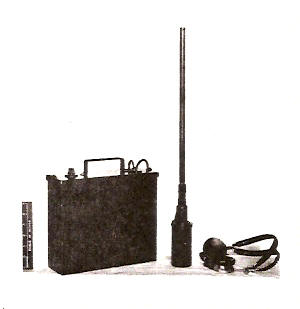
AN/PRS-2 "Mamie" Detector 1946
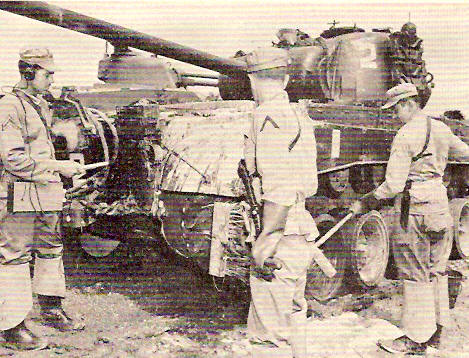
Contamination measurement with a portable GM detector after decontaminating a tank 1950's
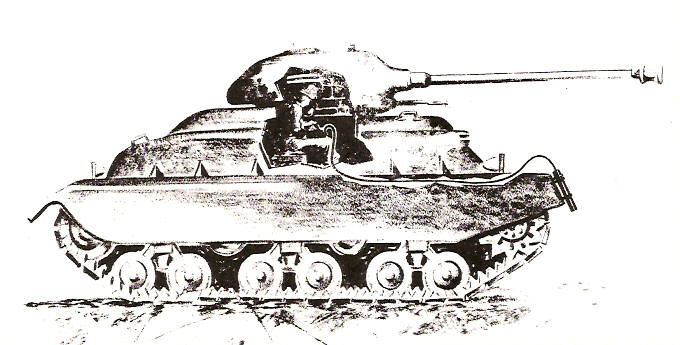
Tank providing shielding with probe on front to measure exposure rate levels 1950's
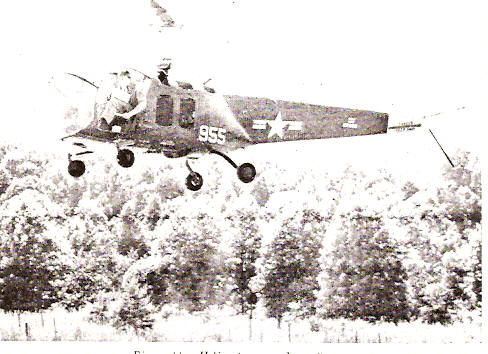
Helicopter with RADIAC to probe for ground contamination 1950's
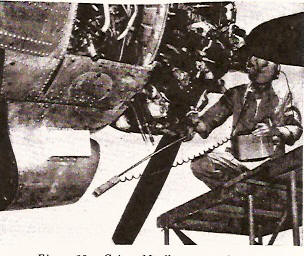
An airplane survey with a AN/PDR-8 long probe meter 1950's
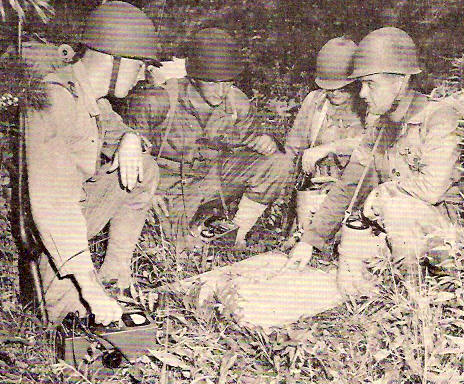
Radiac instruments were evaluated in a variety of missions 1950's
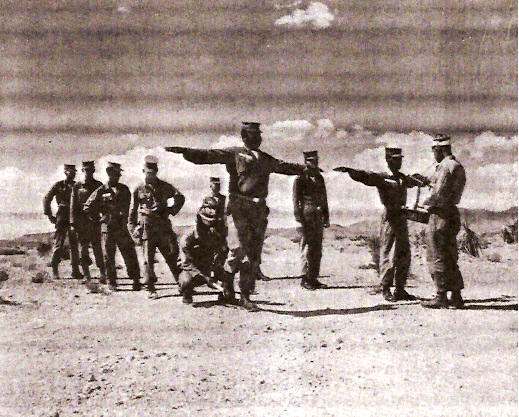
Surveying personnel at a decontamination line 1950's
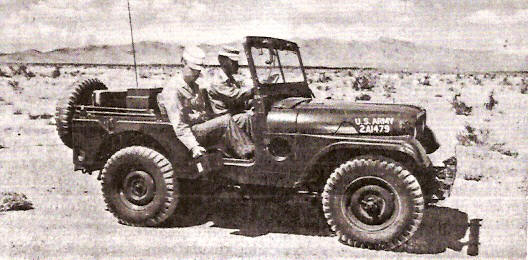
Radiation measurement from a jeep 1950's